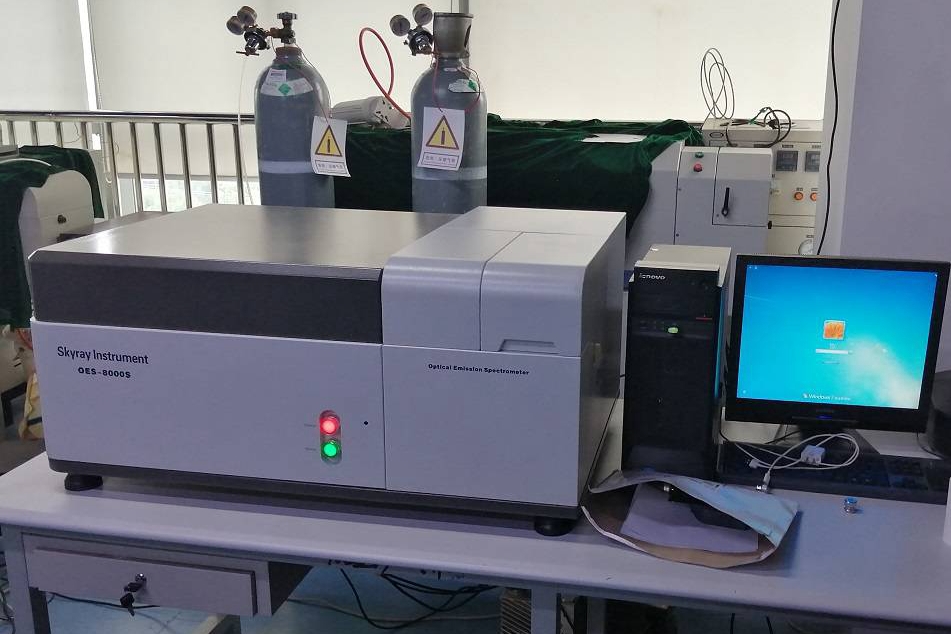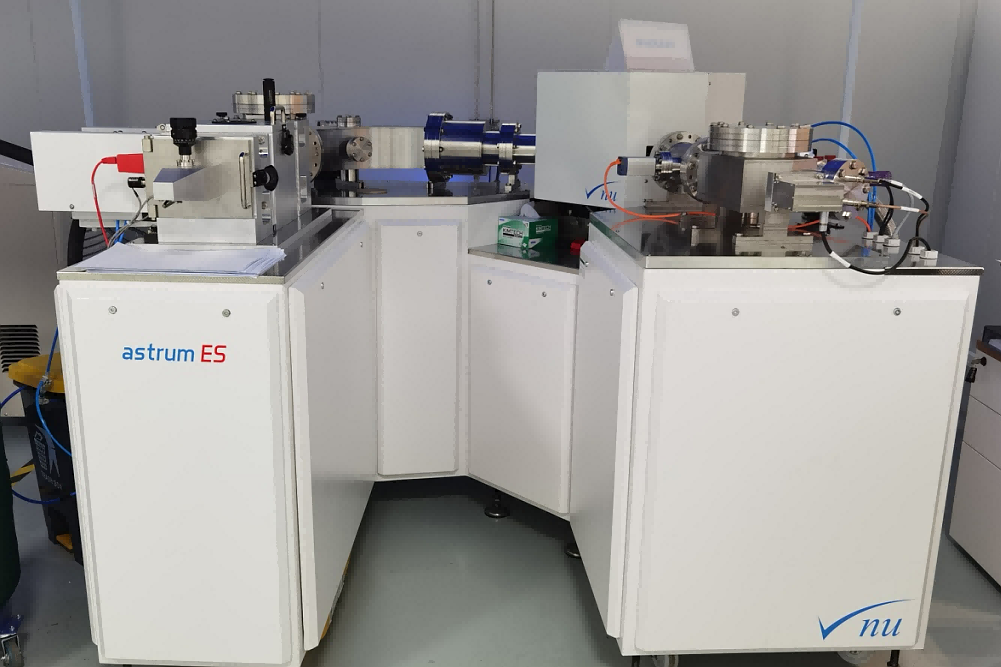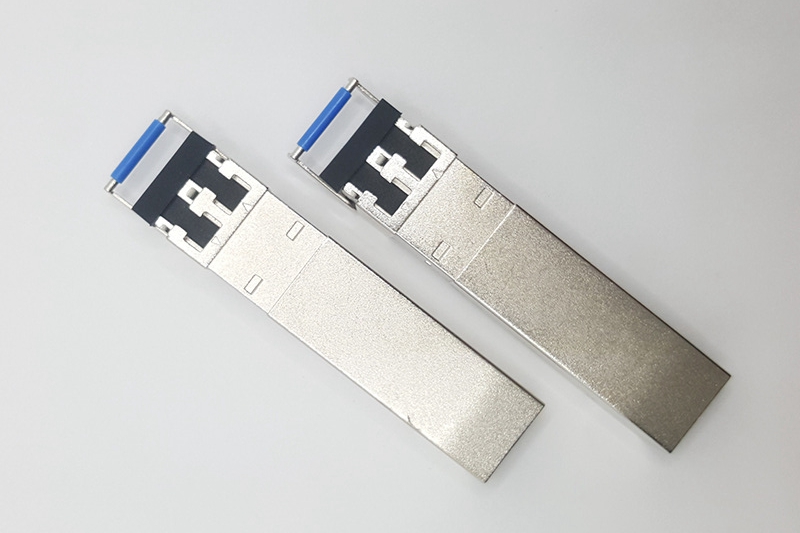Direct Reading Spectrometer for On-Site Alloy Composition Control
Introduction
In precision manufacturing, the slightest deviation in alloy composition can compromise critical components' mechanical integrity, corrosion resistance, or thermal stability. Real-time material validation is essential for producing high-performance turbine blades or structural brackets for electronics. Traditional laboratory analysis methods often delay production decisions, increasing cost and risk.
The direct reading spectrometer offers a rapid, on-site solution for monitoring elemental composition during manufacturing. Detecting emission lines from excited atoms within seconds enables real-time alloy control before solidification or post-processing. This tool has become especially vital in custom manufacturing, where batches are small, specifications are stringent, and traceability is mandatory.
This blog explores the working principle of direct reading spectrometry, its integration into custom alloy production, and its impact on quality control. A zinc die-casting case study and comparisons with alternative techniques illustrate its engineering value.

Principle of Direct Reading Spectrometry
Atomic Emission Mechanism
Direct reading spectrometry (DRS) operates on the principle of atomic emission spectroscopy. When a sample is exposed to an electric arc or spark, its atoms are excited to higher energy levels. As these atoms return to their ground state, they emit photons at wavelengths characteristic of specific elements. A spectrometer captures and analyzes this emission, providing both qualitative and quantitative elemental composition.
The core components include an excitation source (typically a spark stand), an optical system with diffraction gratings, and a photomultiplier or CCD detector array. The emitted light is split into spectral lines and matched against reference standards. Each element—iron, magnesium, or titanium—has a distinct spectral fingerprint, enabling precise identification.
This technique is especially suited for metallic samples and enables the detection of major alloying elements and ultra-trace impurities at parts-per-million (ppm) levels.
Advantages Over Traditional Methods
Unlike wet chemical analysis or X-ray fluorescence (XRF), DRS offers two key benefits: speed and sensitivity. Results are typically available within 30 seconds after sample excitation, making it ideal for on-site verification during casting, forging, or CNC finishing operations.
Furthermore, DRS surpasses other methods in trace element resolution. While portable XRF devices may struggle to detect elements like boron or sulfur in steel, DRS can provide precise readings even for sub-ppm levels. This precision is vital for applications in sectors like aerospace or energy, where minor deviations can result in premature component failure.
Real-Time Spectral Calibration
Direct reading spectrometers must be calibrated using certified reference materials (CRMs) to maintain accuracy. These calibration routines are traceable to international standards such as ASTM E415 and ISO 17025. Advanced models also feature auto-drift correction to compensate for electrode wear and temperature fluctuations.
By implementing periodic calibration routines, operators can ensure that the system maintains its accuracy and repeatability, crucial in custom manufacturing environments where production tolerances are often tighter than ±0.01%.
Implementation of DRS in Alloy Manufacturing
On-Site Composition Validation
In alloy production, particularly for mission-critical parts in turbine housings, valve bodies, or orthopedic implants, verifying composition accuracy at the point of manufacture is essential. Direct reading spectrometers enable on-site, real-time verification of elemental content before solidification or during intermediate processing. It eliminates the delays associated with off-site lab testing.
For instance, alloy homogeneity must be controlled to within ±0.03 wt% when pouring nickel-based alloy components using investment casting. DRS allows technicians to perform 100% inspection of melt batches, flagging off-ratio samples before material wastage occurs. It is especially vital when managing expensive superalloys or reactive metals like titanium.
Quality Assurance in Casting and Forging
The DRS system is widely integrated into precision casting and forging workflows, acting as a gatekeeper before further processing. After rough casting, a quick surface polish exposes the metallic matrix for analysis. The batch can be quarantined immediately if deviations are detected—such as excess manganese in carbon steel or low chromium in stainless alloys.
This step also helps detect cross-contamination when switching materials within the same furnace. The ability to detect elements down to ppm levels makes DRS indispensable for ensuring alloy segregation has not occurred, preserving traceability from raw material to the final product.
Integration with Statistical Process Control (SPC)
In continuous production environments, DRS systems are frequently linked with SPC software. Each analysis result is automatically recorded and plotted against control charts. Engineers can intervene before specifications are breached when trend deviations are identified—such as gradual nickel depletion over multiple heats.
This real-time data capture aligns with lean manufacturing principles and PDCA cycle practices, ensuring corrective actions are driven by empirical evidence rather than guesswork. Integrating DRS into alloy workflows represents a significant advancement in maintaining material conformity without compromising throughput.
Comparison with Alternative Spectrometry Methods
DRS vs. X-Ray Fluorescence (XRF)
X-ray fluorescence is a widely used technique for qualitative and semi-quantitative analysis of metal surfaces. However, XRF's limitation lies in its penetration depth (typically less than 10 µm) and lower sensitivity to light elements such as boron, carbon, and lithium. DRS offers superior depth profiling and quantitative resolution down to sub-ppm levels for alloys requiring accurate bulk composition validation, especially in custom parts manufacturing.
In contrast to XRF, DRS can handle molten, semi-solid, and solid-state samples, making it ideal for in-process monitoring and final inspection. While XRF is suitable for identifying coating composition or surface plating, it falls short in core alloy certification, especially for aerospace-grade or medical-grade components.
DRS vs. Optical Emission Spectroscopy (OES)
OES remains a staple in metal foundries, particularly for ferrous alloy verification. However, OES typically requires destructive sample preparation�grinding, machining, or remelting. This is a significant drawback for high-value components or when real-time decisions are required on the shop floor.
DRS, by contrast, uses a glow-discharge plasma in a vacuum to remove atomic layers without needing physical abrasion. This enables direct measurement of ultra-trace impurities and major alloying elements in situ. For example, in producing turbine blades using superalloy, DRS can ensure tight limits on sulfur or oxygen content that OES may not detect effectively.
Cost and Throughput Considerations
While DRS equipment entails a higher initial investment than XRF or handheld spectrometers, its long-term return lies in process efficiency, data integrity, and material certification reliability. In high-volume or mission-critical operations, such as aluminum die casting or medical implant fabrication, avoiding a single batch recall more than justifies the instrumentation expense.
Furthermore, DRS's ability to run unattended with automated carousel loaders allows continuous testing in high-throughput environments. This makes it an indispensable tool in development labs and inline manufacturing cells where precision, repeatability, and traceability are non-negotiable.
DRS Data Integration in Quality Management Systems
Traceable Composition Certification
One of the critical advantages of using direct reading spectrometers in custom manufacturing is their seamless integration with digital quality systems. Every elemental analysis with timestamped metadata, operator ID, sample batch, and calibration reference can be logged. This ensures that each component's chemical fingerprint is permanently linked to its production record.
This level of traceability is vital for compliance with quality standards such as ISO 9001 and IATF 16949. For example, a heat-resistant carbon steel bracket used in automotive engine mounts must meet dimensional tolerances and compositional targets for carbon, silicon, and manganese. A deviation of ±0.05% in carbon could affect hardenability and fatigue life.
By embedding DRS data into the digital traveler or MES (Manufacturing Execution System), manufacturers can offer third-party certifiers and clients a verified composition report traceable to raw material lots and processing dates.
Support for Continuous Improvement (PDCA)
Direct reading spectrometry supports continuous improvement practices under the PDCA (Plan-Do-Check-Act) framework. By analyzing trends in alloy deviations across batches, engineers can identify root causes such as contamination in crucibles, inconsistent charge ratios, or drift in material supplier quality.
This enables corrective action before defects reach downstream stages. For instance, if DRS analysis indicates a recurring copper enrichment beyond specified limits in die-cast aluminum parts, preemptive filtration or process parameter adjustment can be applied.
Real-time alerts, control charts, and out-of-spec flags embedded within the DRS system transform chemical validation from a static check to a dynamic control tool. This reinforces not only product conformity but also process maturity.
Conclusion
Integrating direct reading spectrometers into custom part manufacturing delivers measurable accuracy, traceability, and real-time process control advantages. Whether verifying nickel-based alloy turbine components or auditing high-purity aluminum parts, DRS ensures compositional conformity to tight tolerances.
This technology eliminates the guesswork in material validation, enabling engineers to implement closed-loop quality systems grounded in empirical data. The result is improved product reliability, minimized rework rates, and compliance with increasingly demanding industry certifications.
For manufacturers serving sectors like aerospace, medical devices, and energy, where elemental precision is non-negotiable, DRS provides not just analysis—but assurance. As material complexity increases and lot traceability becomes standard practice, direct reading spectrometry will remain an indispensable asset in advanced quality assurance workflows.



